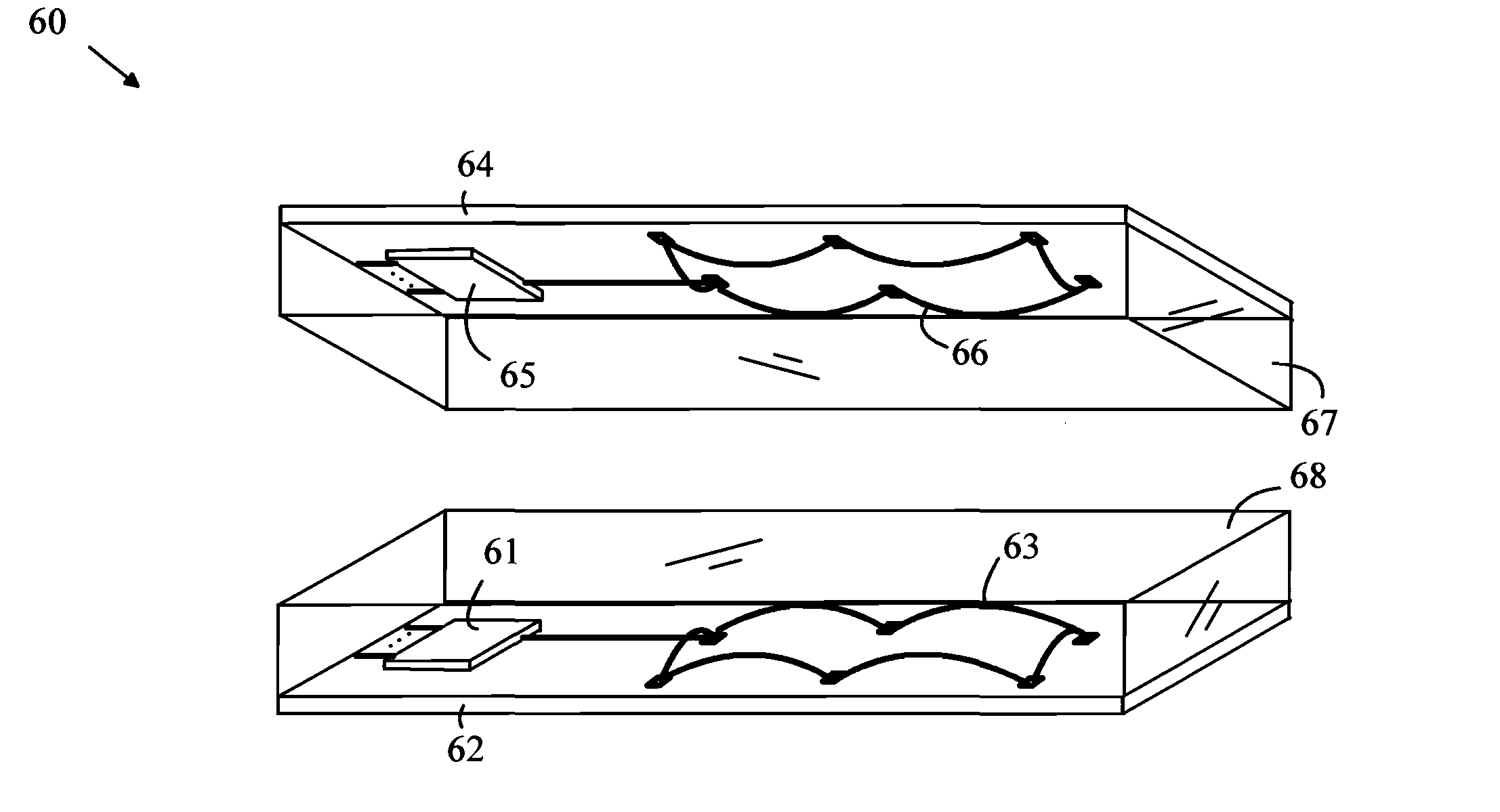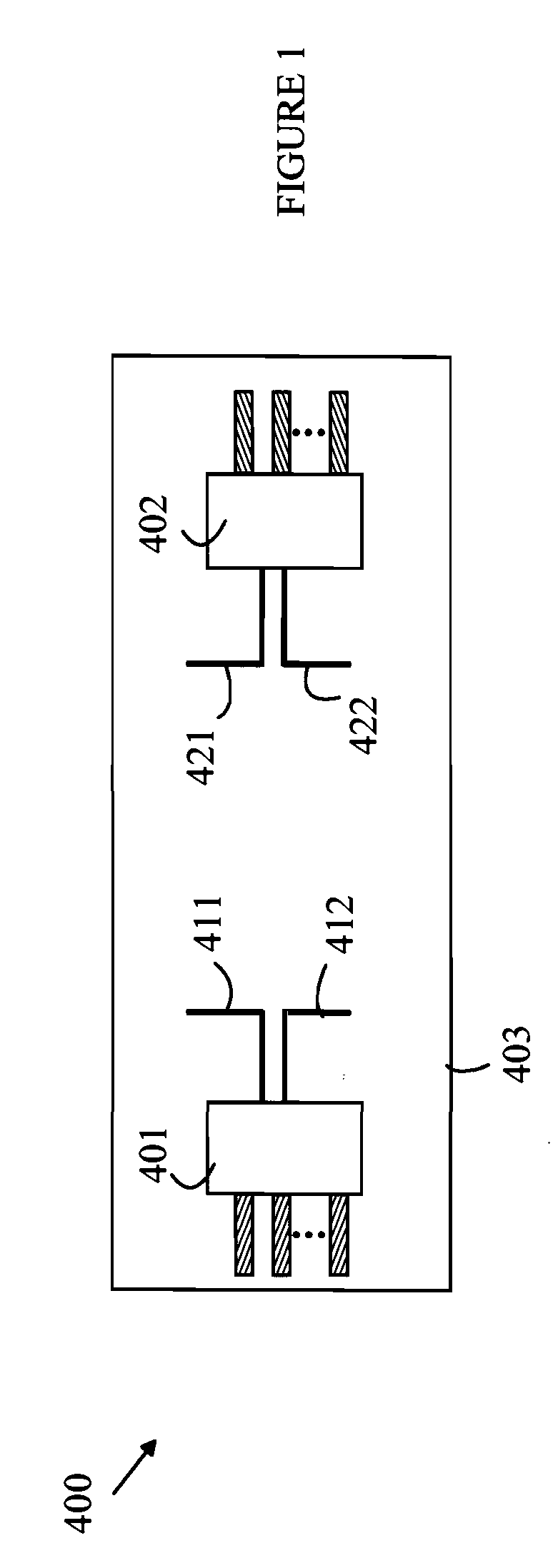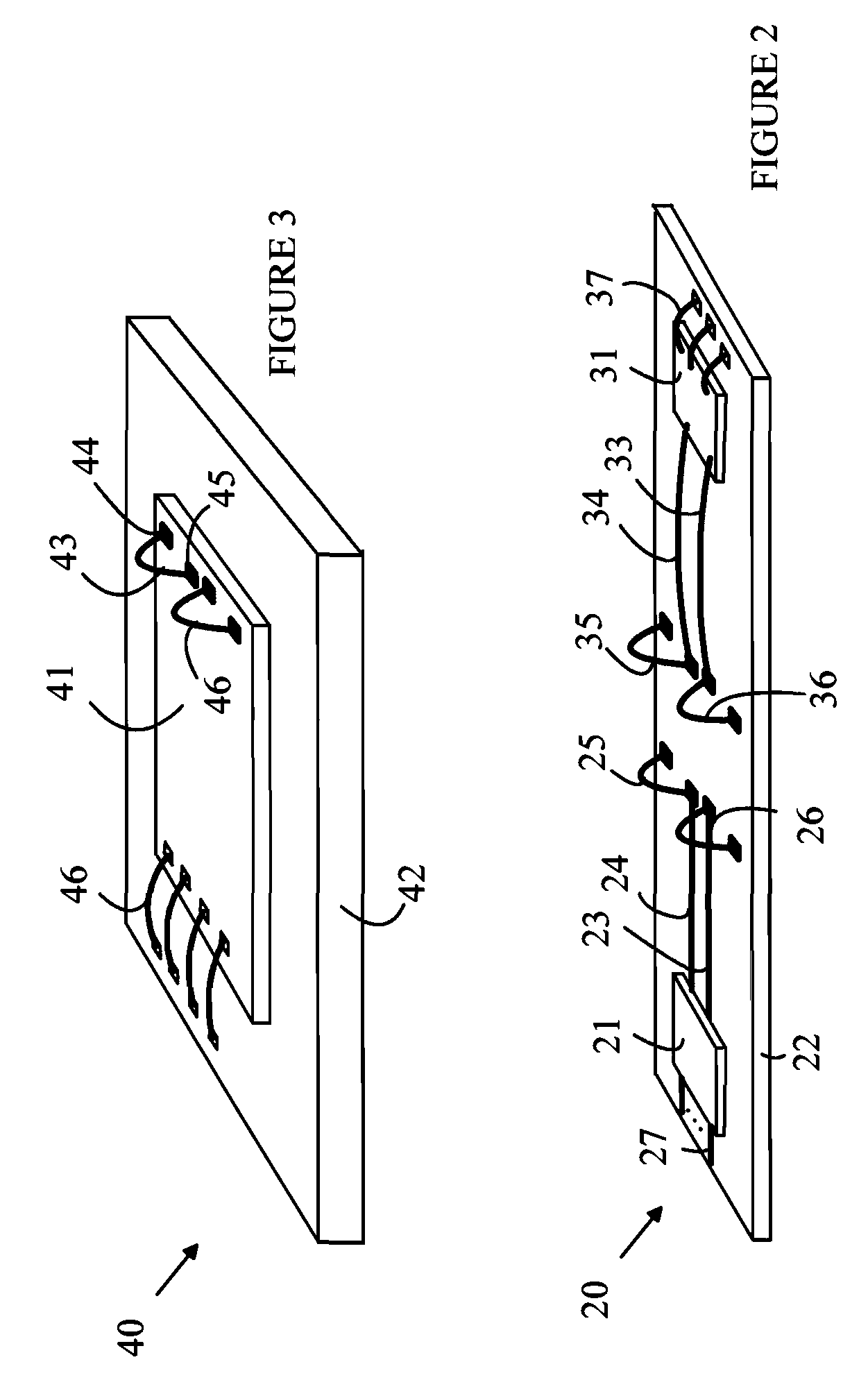RF Transceiver Adapted for Signal Isolators and Proximity Sensors
a transceiver and proximity sensor technology, applied in the direction of digital transmission, transmission, duplex signal operation, etc., can solve the problems of high amplification level, high power consumption of devices, and hazard to the receiving circuit or individuals in contact with the receiving circui
- Summary
- Abstract
- Description
- Claims
- Application Information
AI Technical Summary
Benefits of technology
Problems solved by technology
Method used
Image
Examples
Embodiment Construction
[0018]The present invention is based on the observation that at frequencies in 100 GHz range, a RF transceiver that operates in the near field can be constructed on a substrate that is small enough to be useful in many handheld devices and that has an electrical efficiency that exceeds that of optical transceivers.
[0019]The manner in which the present invention provides its advantages can be more easily understood with reference to an RF transceiver that is configured to provide a galvanic isolator. A galvanic isolator can be viewed as a split circuit element in which the first portion of the circuit element is the transmitter and the second portion is the receiver of the transceiver. The two portions are disposed on a substrate and connected to separate power supplies having grounds and power rails that are not connected to one another in a manner that prevents interference in one portion of the isolator to propagate to the other portion of the isolator. In the case of an RF transc...
PUM
 Login to View More
Login to View More Abstract
Description
Claims
Application Information
 Login to View More
Login to View More - R&D
- Intellectual Property
- Life Sciences
- Materials
- Tech Scout
- Unparalleled Data Quality
- Higher Quality Content
- 60% Fewer Hallucinations
Browse by: Latest US Patents, China's latest patents, Technical Efficacy Thesaurus, Application Domain, Technology Topic, Popular Technical Reports.
© 2025 PatSnap. All rights reserved.Legal|Privacy policy|Modern Slavery Act Transparency Statement|Sitemap|About US| Contact US: help@patsnap.com



